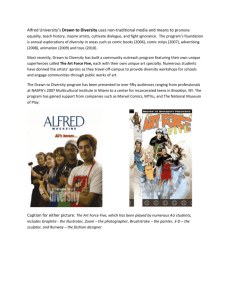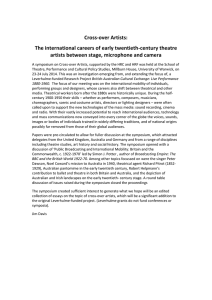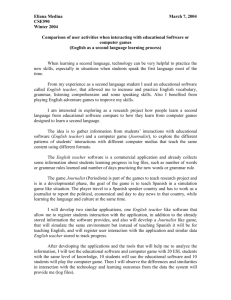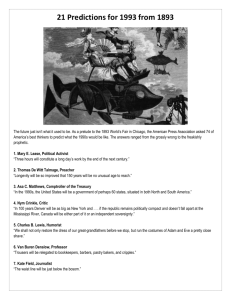the transcript for this video
advertisement
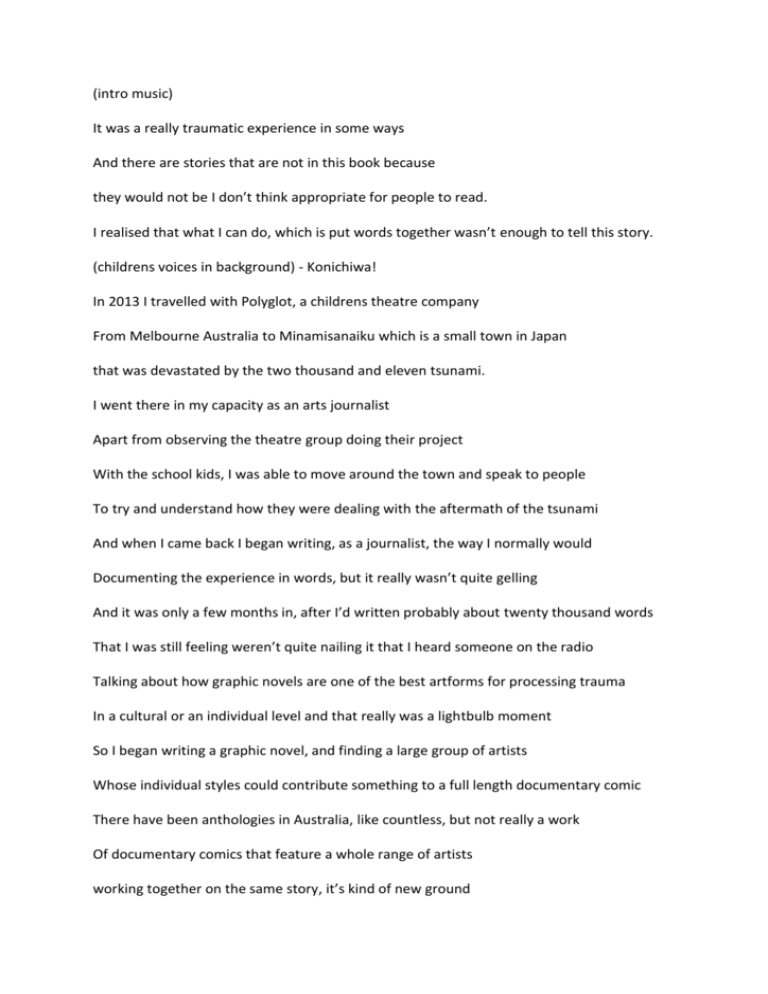
(intro music) It was a really traumatic experience in some ways And there are stories that are not in this book because they would not be I don’t think appropriate for people to read. I realised that what I can do, which is put words together wasn’t enough to tell this story. (childrens voices in background) - Konichiwa! In 2013 I travelled with Polyglot, a childrens theatre company From Melbourne Australia to Minamisanaiku which is a small town in Japan that was devastated by the two thousand and eleven tsunami. I went there in my capacity as an arts journalist Apart from observing the theatre group doing their project With the school kids, I was able to move around the town and speak to people To try and understand how they were dealing with the aftermath of the tsunami And when I came back I began writing, as a journalist, the way I normally would Documenting the experience in words, but it really wasn’t quite gelling And it was only a few months in, after I’d written probably about twenty thousand words That I was still feeling weren’t quite nailing it that I heard someone on the radio Talking about how graphic novels are one of the best artforms for processing trauma In a cultural or an individual level and that really was a lightbulb moment So I began writing a graphic novel, and finding a large group of artists Whose individual styles could contribute something to a full length documentary comic There have been anthologies in Australia, like countless, but not really a work Of documentary comics that feature a whole range of artists working together on the same story, it’s kind of new ground I had to learn a lot about the art of getting rid of words Of erasing them and doing away and letting someone else do that job for you Of literally, in some cases, painting a picture You have so much freedom in what you can show in a comic, More than any other medium If you want a big dramatic scene to happen on the page, Then you tear down the borders of the frame and have things, You know, even bleeding off the side of the page I think there’s a wonderful immediacy about images Images can also give the viewer some room to have their own feelings And responses to what’s actually happening Every time I get a new page from someone, I’m just like “Wow, that’s so much more than I could’ve kind of visualised myself” Some things are inside things, and a terrible event makes them outside things And some outside things become inside things, where they have no right to be With new walls that keep them there. This book is kind of my answer to how I can help Because in a real sense, there’s not a lot I could do but pass on the stories that people wanted, and that was one of the things I learnt most over there, is that people want not to be forgotten. That’s the real key, please don’t forget us. (children talking and singing over the top of each other) (end title music)

